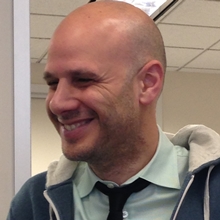Governments have long funded social protection programs to protect the poor from the worst kinds of deprivation. But the launch of Mexico’s Oportunidades conditional cash transfer program more than a decade ago raised the question: can social protection programs break the cycle of poverty and even boost households out of poverty permanently? And what types of programs—from workfare to cash transfer programs to multifaceted graduation approaches—hold the most promise?
In this September’s Policy Research Talk, Senior Economist Berk Özler synthesized a growing body of evidence on these questions while drawing out policy implications for the design of cash transfer and other antipoverty programs. The Policy Research Talks are a monthly event held by the research department to foster a dialogue between researchers and their colleagues across the World Bank.
“Over the past decade, these programs have been increasing in both numbers and types,” said Research Director Asli Demirguc-Kunt, who hosted the event. “More and more, they’re being designed not just to make sure poor people eat, but to allow them to exit from poverty, in a sustainable fashion, over the long run.”
Workfare programs—such as Argentina’s Jefes de Hogar and the Bihar Rural Employment Guarantee Scheme—were the first target of Özler’s scrutiny. While these programs have succeeded in preventing widespread suffering in the face of economic crises or famines, they also come at a high cost. Beneficiaries in workfare programs often undertake backbreaking labor outside the home, sometimes forcing their adolescent children to quit school prematurely. The programs are also administratively expensive, with less than half of the costs going to wages. “It would have been better to give cash,” Özler concluded after reviewing the currently available evidence on workfare programs, “unless workfare programs can generate sufficiently valuable public goods benefitting the poor.”

